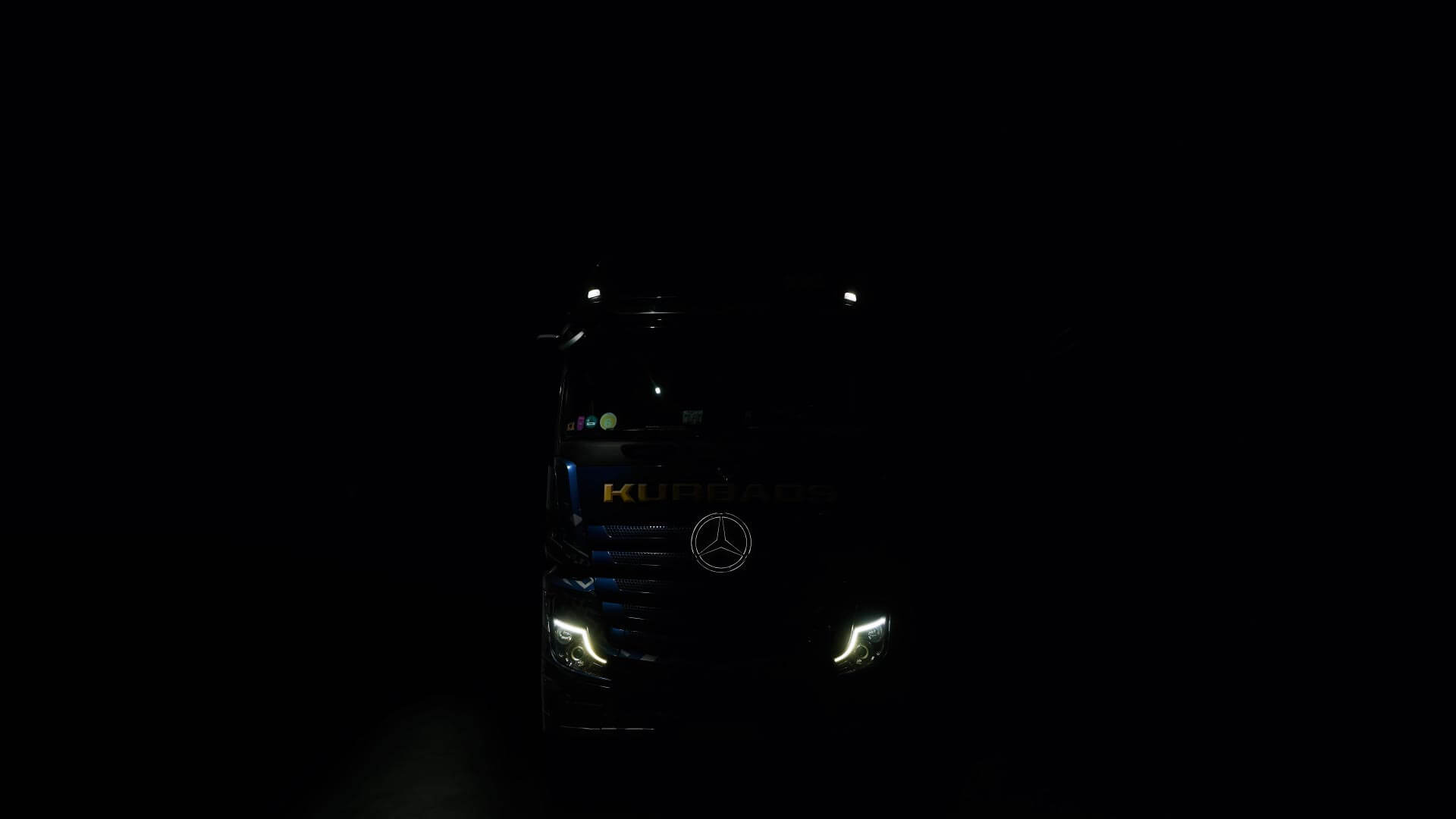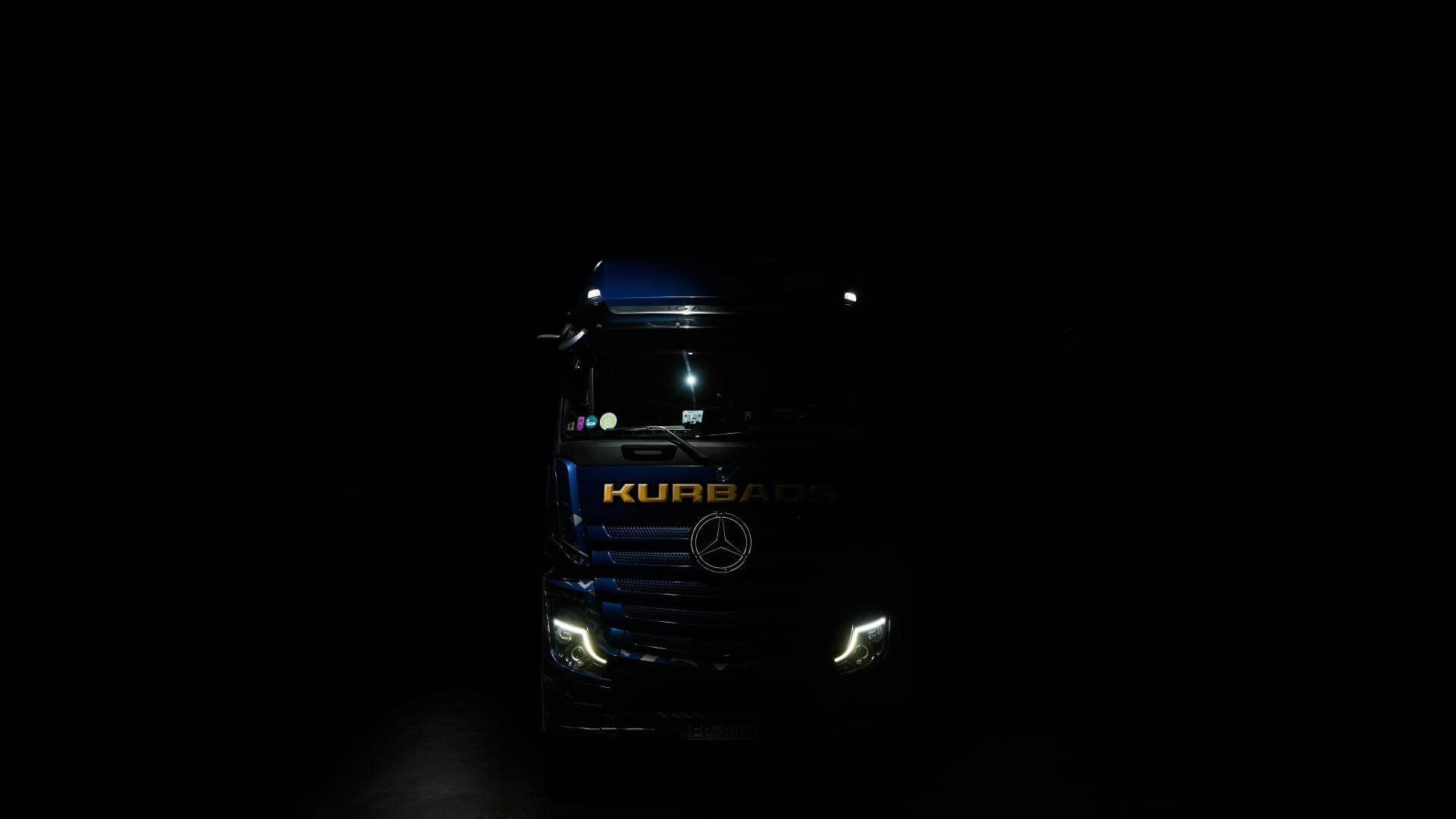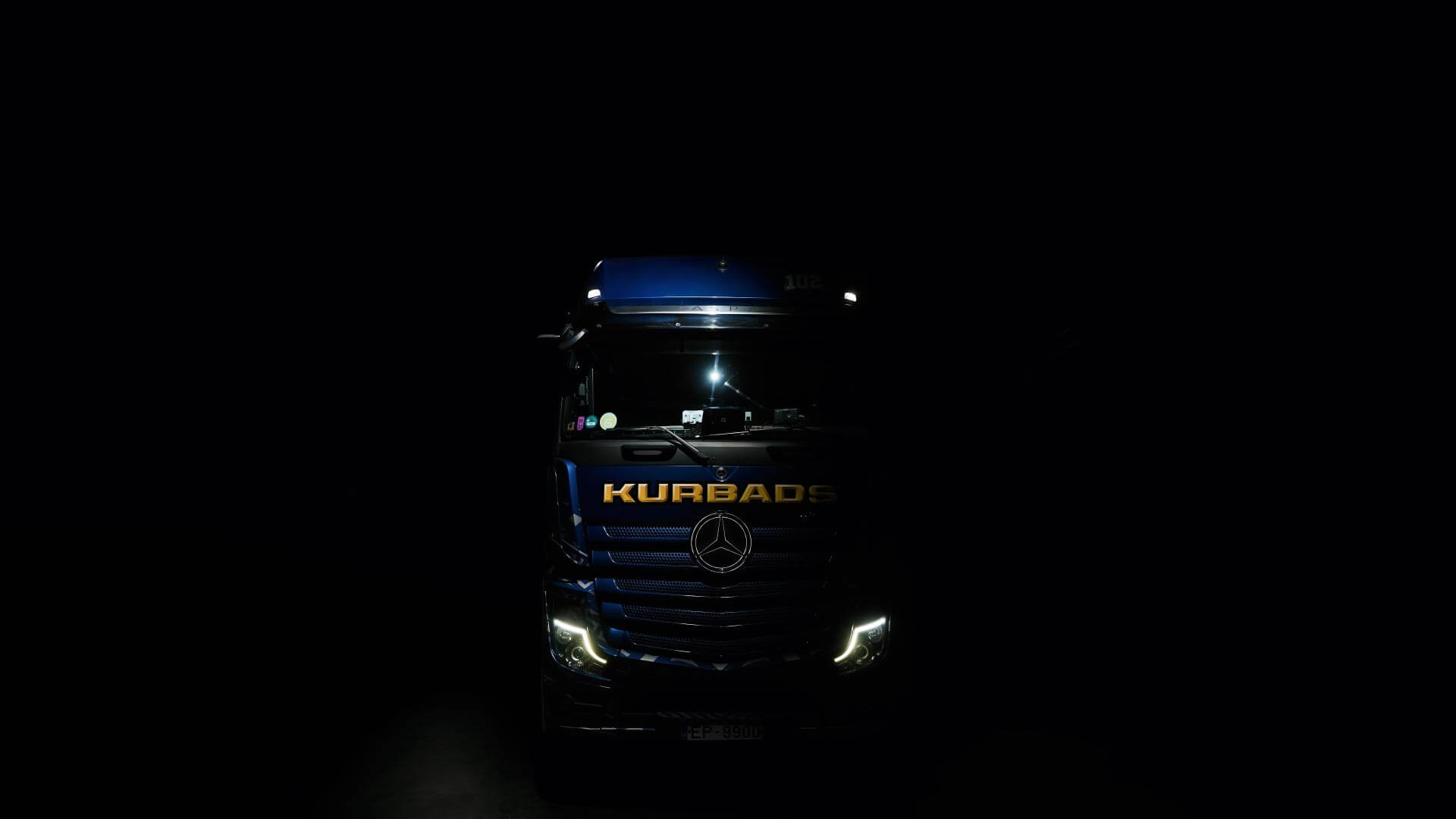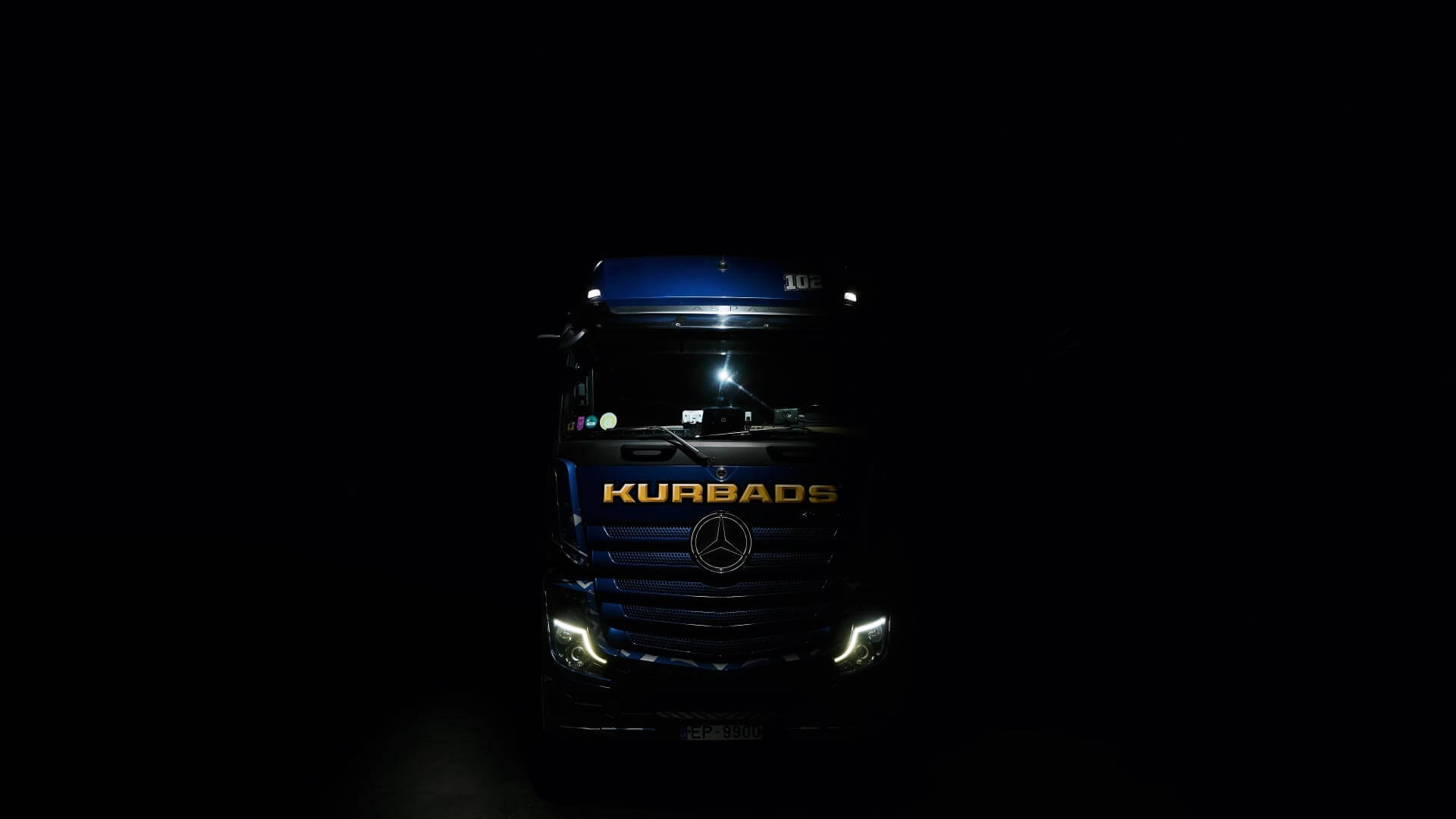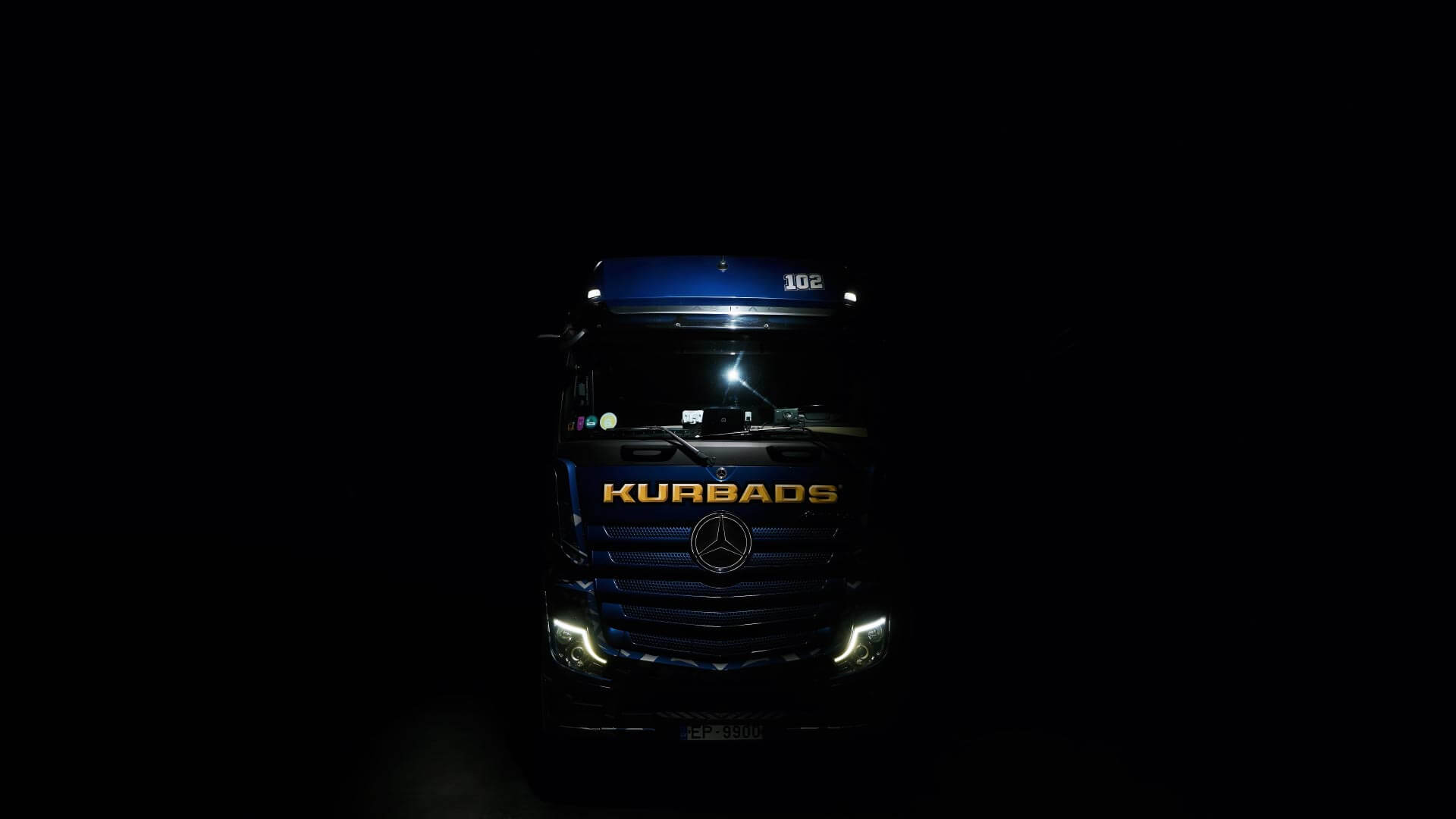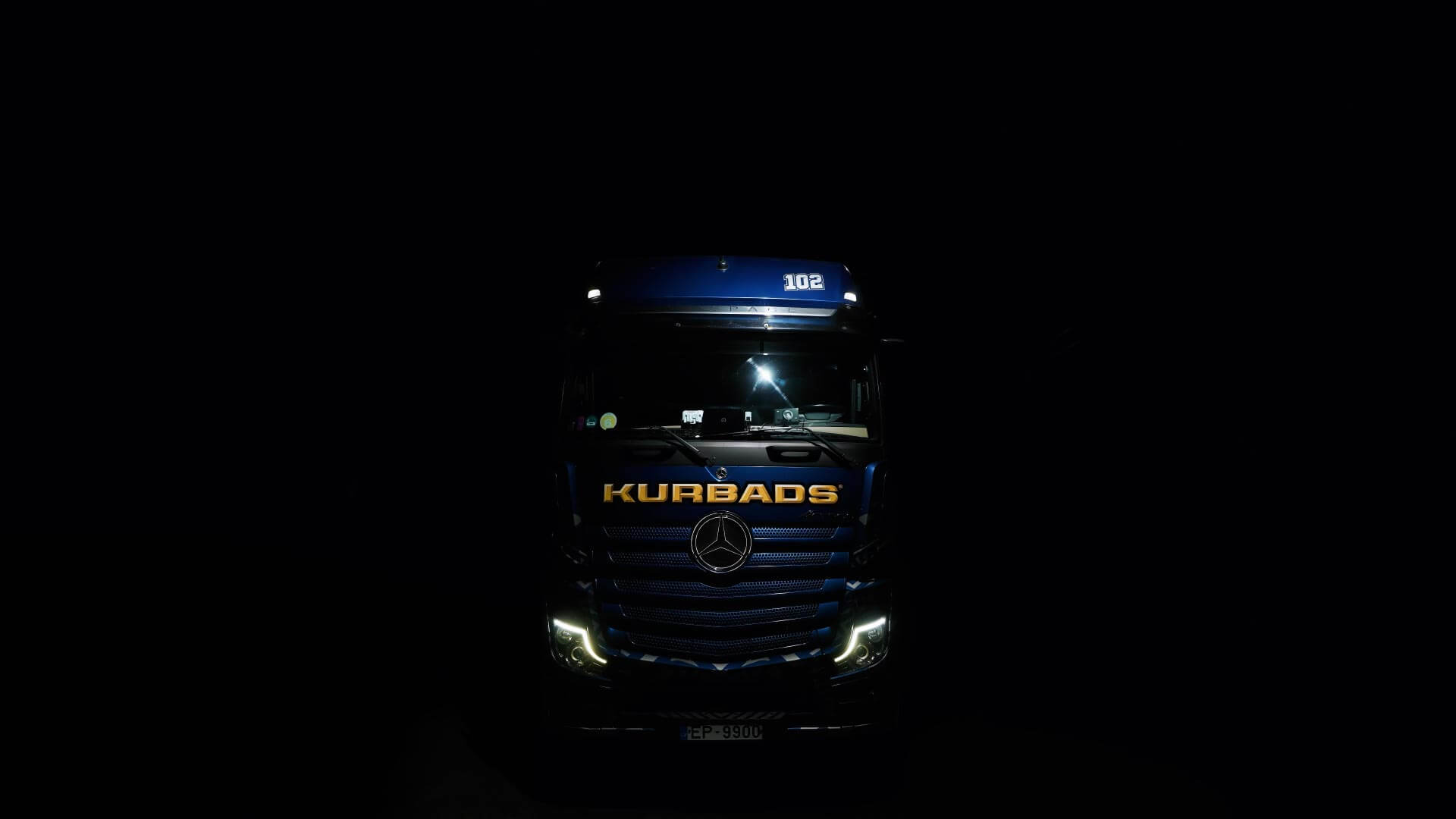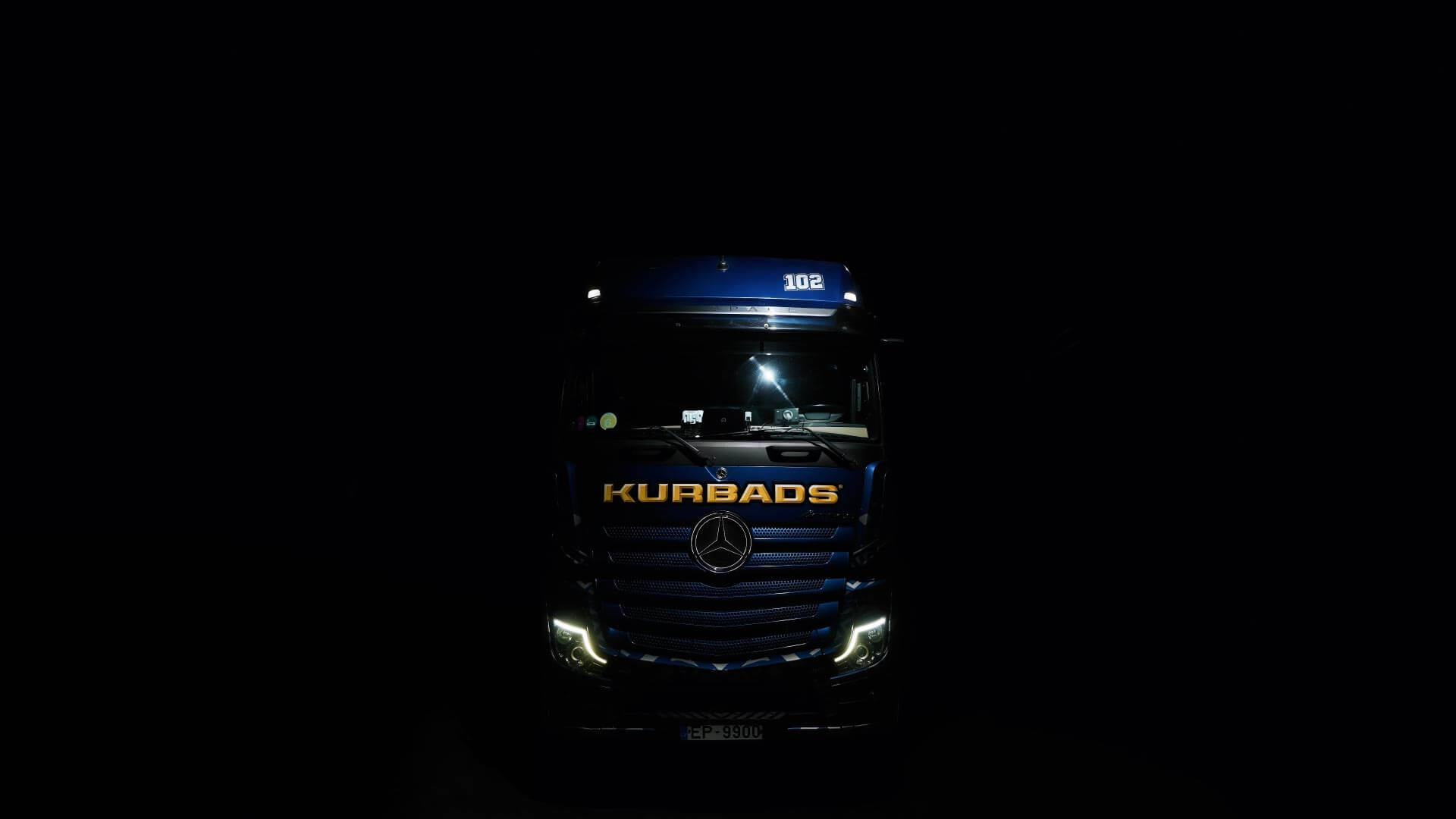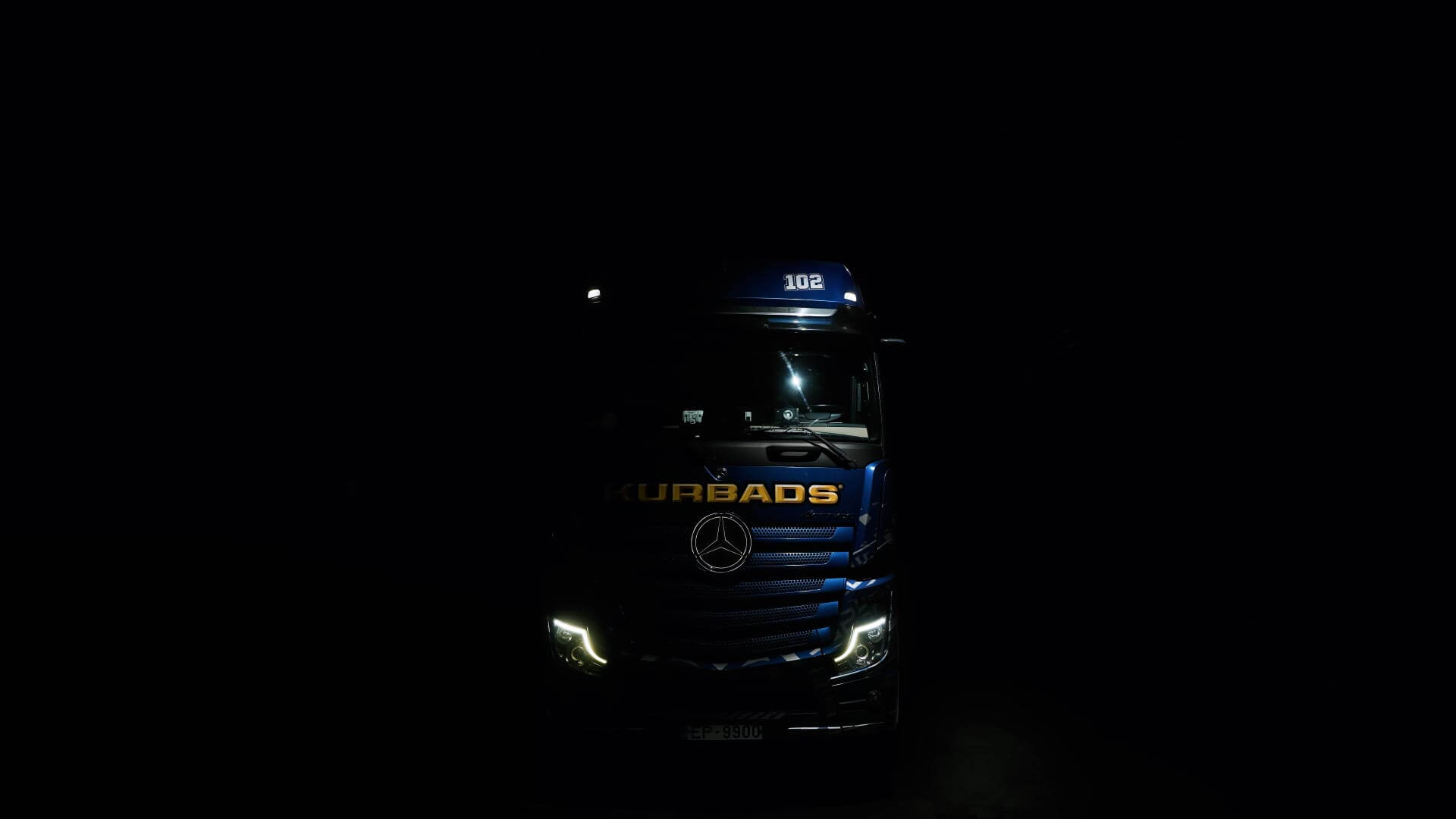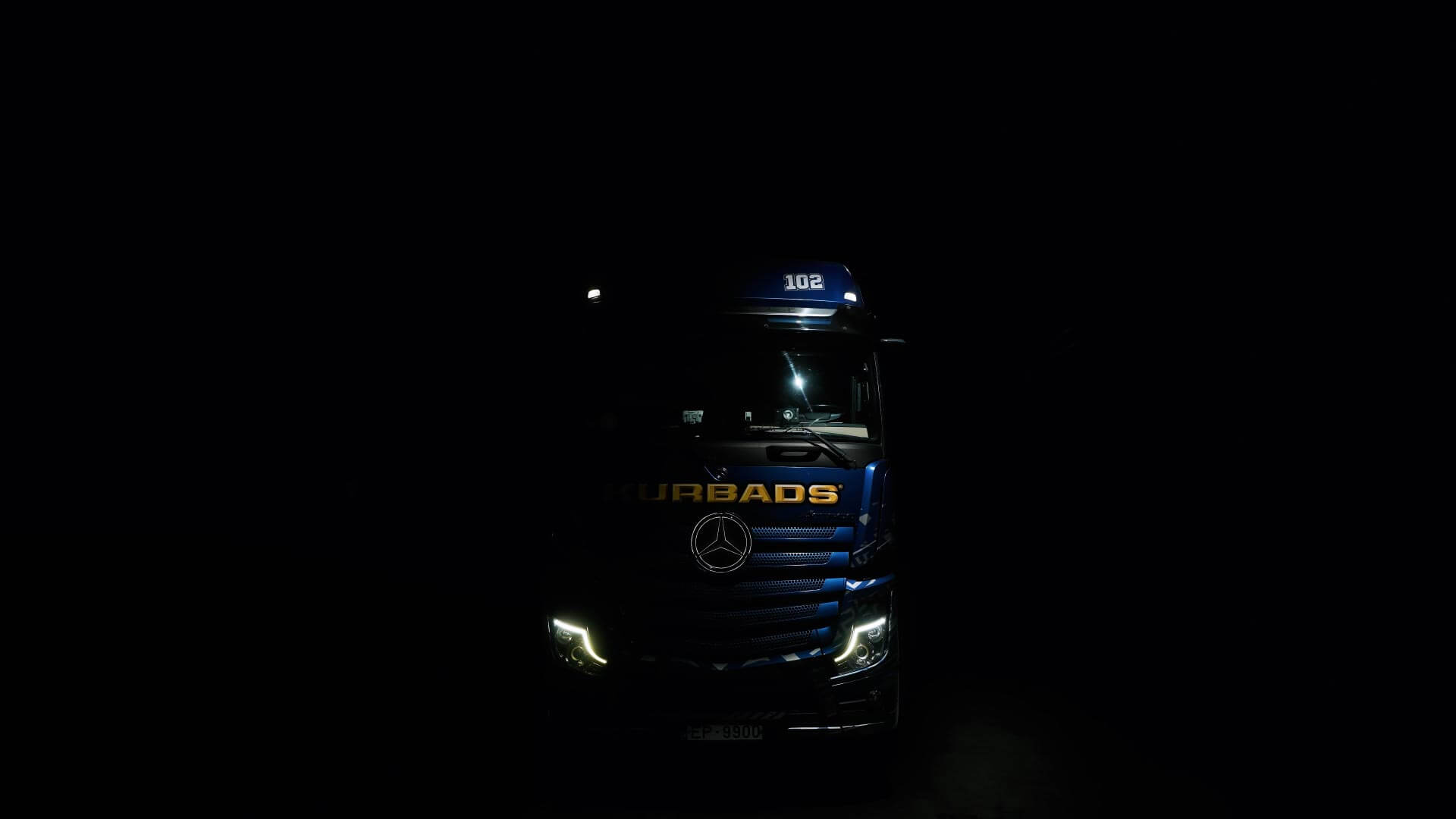How and why the Italian supercar manufacture's attempt to create a “global” Ferrari remained misunderstood.
Everybody loves Ferrari. The photo shoot of the 1985 Nero, or black Ferrari Mondial 3.2, on the premises of the transport and logistics company Kurbads took longer than usual, partly because of an unusual find. During the inspection of the car, a case was discovered with a mysterious oval brass plaque engraved not only with the name of the car, but also with the heraldic coat of arms and the serial number. What is it?
The only one in its class
The Ferrari in Kurbada's care represents one of a total of four generations of Mondial launched between 1980 and 1993, the model's mission being to replace the successful Ferrari 308/208 GT4. Every Ferrari model is unique in some way, and the Mondial is no exception. It became the last Ferrari to feature a mid-mounted V8 engine while implementing the 2+2 seating formula. Four-seater cars with the engine in the rear are generally rare. The Mondial is the only Ferrari in which engines have been installed both transversely and longitudinally within the same model over time. Moreover, the latter retained the 90-degree gearbox position – a 20-year-old Formula 1 solution at the time, which is why the latest generation Mondial earned the nickname “t” or “transversale”. The Mondial became the first Ferrari to feature not only power steering and brakes, ABS and electronically controlled damper units, but also the first Ferrari in which the steering wheel could finally be adjusted like in a normal car, instead of using a spanner. All generations of the Mondial, except the very first, were also available as convertibles, whose sales matched and in some places even surpassed those of the closed coupé. After all, in 1988, Pope John Paul II himself was driven around the Fiorano circuit in an open Mondial. And yet the Mondial became the “non amato” or unloved Ferrari. Perché?
Growth difficulties
In the true spirit of Vittorio de Sica's cinematic masterpieces, the Mondial was born at a difficult time for its owners. Ferrari had just received a nasty blow to its confidence and business in the form of stricter emissions and safety requirements in the most important market outside Europe, the USA. The Enzo Ferrari-led firm even had to temporarily suspend exports of its hellish V12 models to the land from which the dollars of wealthy enthusiasts flowed in a generous stream. History has shown that even a supercomputer, after inputting the necessary parameters, can give, if not absurd, then not very successful recommendations for solving the problem – what to ask of the “analogue” Maranello engineers, who had to reckon with the Fiat Group's ever more insistent desire to control the processes of a shaky horse in a proud principality. The result of this ungrateful task was a car that was too wide, too heavy and too weak, and with ugly “safety” bumpers that seriously damaged the design of Leonardo Fioravanti, the talented Pininfarina stylist and designer of several Ferraris. If any linguist is tempted to replace the “bumpers” with “rear bar” at any cost, the Mondial 8 did have them. At the same time, the cleverly designed, seductive air intakes on the sides and front bonnet harmonised perfectly with the Mondial's silhouette and the vertical rear glass surrounded by the wide roof pillars.
The car's 2.9-litre engine produced just 214 hp (from 8 cylinders!), giving a measly 9.5 seconds of acceleration (other sources say as little as ten seconds) at a curb weight of 1400 kg – a disappointment for fans and an embarrassment for the designers. The reputation of the “low calorie” Ferrari was not improved by the fact that the Ferrari 308 GTB, which was both prettier and faster, was still produced alongside the Mondial. And the Porsche 930 Turbo (then 911 Turbo), which had 300 horsepower, was USD 25.000 cheaper on the US market, and those were 1980s dollars.
The Mondial 8 managed to pull through to just over 700 units before being hastily replaced by the Mondial QV, or Quattrovalvole. Four valves per cylinder improved the car's dynamics by two seconds, which was already some progress. After 3 years, 1164 Mondial coupés and 629 convertibles (anno 1983), the Quattrovalvole left the scene to make way for our Mondial 3.2.
The newest will be the first
The Ferrari Mondial 3.2 made its debut in 1985 in Germany at the now defunct Frankfurt Motor Show. The most significant innovation, as in the parallel production Ferrari 328, was a larger 3.2-litre V8 engine with 270 hp. It would be appropriate to point out here that the Mondial also marked the abandonment of the capricious Weber carburettors, the switch to electronic fuel injection, etc. This was often the cause of failures and, consequently, tasty bait for the Mondial's many critics. The press at the time was hung up on the Mondial, calling the Mondial 8 “the worst Ferrari ever”, which was harsh, or even “the worst car in the world”, which was of course an exaggeration. The scepticism of the experts was justified, but it literally made the good qualities of the car black and white. The cabin, with light-brown Connolly leather, was more comfortable and more spacious than the outdated 308 and Dino. The sound of the engine in any generation Mondial was, and still is, fantastic, and closing the gears with a long, curved lever moving across the iconic open console is an experience that few can match in the world of sports cars. To make the car lighter, the bonnets were made of aluminium and the doors of fibreglass. The Mondial bodies were made in Maranello “just across the street”, at the body company Carrozzeria Scaglietti, today owned by Ferrari and specialising in aluminium bodies Initially, the Mondial was even fitted with the so-called European diameter Michelin TRX tyres with an inner diameter of 390 mm, but soon Ferrari switched to the more widely used inch system. Forty years ago, the eight-cylinder Ferrari had the same front tyre size as the standard family hatchback – 205/55 R16. The rear tyres were slightly larger, 225/55 R16. The Mondial 3.2 was fitted as standard with electric window lifters, a modern instrument panel and air conditioning, which mostly worked, but the coupé was never rid of the fame of the hatchback boy. The supposedly promising 3.2 turned out to be produced in just 987 coupé and 810 convertible units before the reins were handed over to the fourth and final edition of the Mondial t at the turn of the 1980s–1990s. And that's what makes the Mondial 3.2 today a rare and therefore collector-interested Ferrari, and (for now) affordable. After all, the Mondial was also the cheapest Ferrari in the 1980s.
Many columns, essays and pamphlets have been written about the Mondial's difficult youth. The common conclusion is that exclusive sports car buyers, and the world in general, were not ready for a gran turismo car from Ferrari in the 1980s. “More touring than speed?” – it can't be a real Ferrari!! The Mondial, with its child seats in the back, elaborate retractable roof, safety structures and comfort features, was the first tentative attempt to make a supercar for families or, if you like, for the people. Even the model name – a rare departure from Ferrari's usual three-digit system – symbolised the kingdom of Enzo's intention to create a “global” Ferrari, as that is how “Mondial” translates from the French.
Although the Mondial lacked power and speed, it was suitable for long and safe cruises at high speeds, which meant that the Ferrari owner would end up on the shores of Lake Como or San Francisco Bay with his friends, rather than in the morning paper. With each successive generation, the Mondial became lighter and more powerful, culminating in the Mondial t. But it was the 1990s, the world was flooded with money, the public was clamouring for faster and more extreme sports cars, and 300 hp was no longer beginner's power in the supercar league. In addition, Mondial was not exempt from curious defects and purely constructive slackness until the end of its career. This is most vividly illustrated by the comment of a Mondial owner who never got to open the sunroof of his car because “[...] they were not set correctly, so opening them could ruin the paint”. Divine, isn't it?
All in all, Ferrari's planned risks over the 13-year period did pay off, with a total of around 6,000 Mondial sold, which is a lot for a small-series sports car firm. Because of the Mondial's nasty attitude in its youth, current examples have not managed to become as illogically expensive as other Ferraris. By historic car standards, the Mondial is relatively simple to maintain and repair. The Mondial 3.2 with all the major units attached to a single subframe is the frontier. The Mondial t is structurally already less repairable, but in any case one of the last Maranello products that you will be able to service yourself in your own garage. The Mondial 3.2 is a good and relatively cost-predictable way to get a real Ferrari in there, without having to sell the rest of the house at auction in exchange for this lifetime achievement.
The proof of the Mondial's place in Italian automotive history is the oval plaque on the car in the picture, which certifies the car's registration with the Automotoclub Storico Italiano, or Italian Historical Automobile Club Our Latvian Antique Automobile Club (LAAK) counterpart in Italy is a grand organisation with 150,000 members in 300 affiliated clubs And the neat plaque that historic cars are allowed to display on the outside (Mondial probably failed for aesthetic reasons) is, among other things, proof of the tax breaks that apply to ASI cars.
Transporting supercars is a responsible task
Supercars are very low, powerful and expensive, so transporting them requires experience and skills, which Kurbads car carrier drivers certainly have. Otherwise, why would a Latvian company be entrusted with transporting not one, not two, but several dozen of the latest and most historic supercars from their destinations to their owners' home countries? The Gumball 3000, the Monte Carlo Rally, the Jan Kalmar Beyond Adventure events are just a few examples. Kurbads has also been the main transport partner of Gran Turismo Events for several years. In August 2022, members of the Kurbads team travelled to Italy to join the Gran Turismo Verso Maranello 2022 tour closing event. Upon reaching the tour destination, the participants want to relax after the exciting journey of many kilometres, and return by plane. Kurbads takes care of the return of their exotic vehicles home to Scandinavia. The purpose of the trip to Maranello was to get to know the participants better and to better understand the solutions that Kurbads can offer to the rally organisers and participants. The atmosphere of the event, the striking vehicles, as well as the observations and insights of the Kurbads car carrier drivers can be seen in the attached video. https://youtu.be/be6W4_2_vpc




























